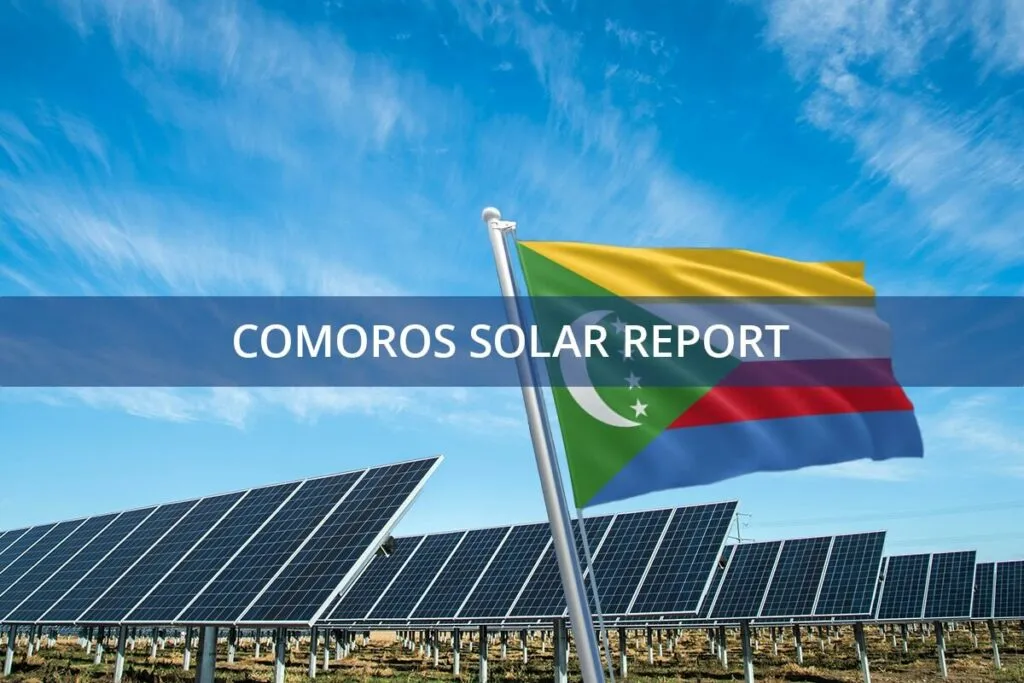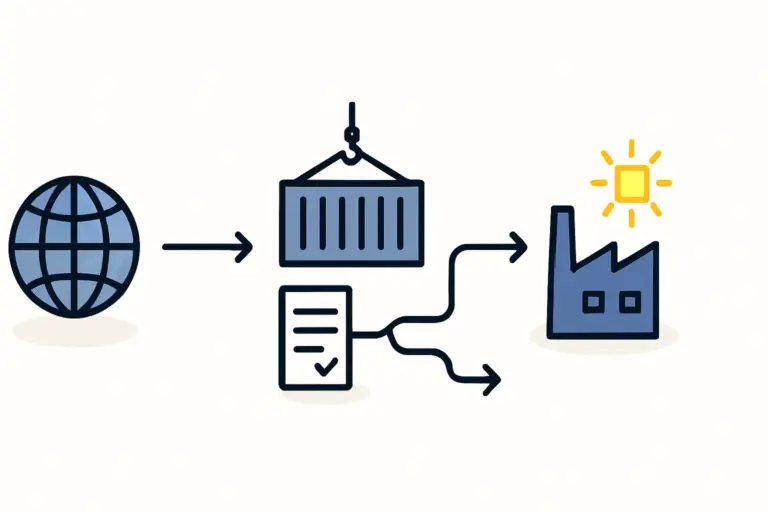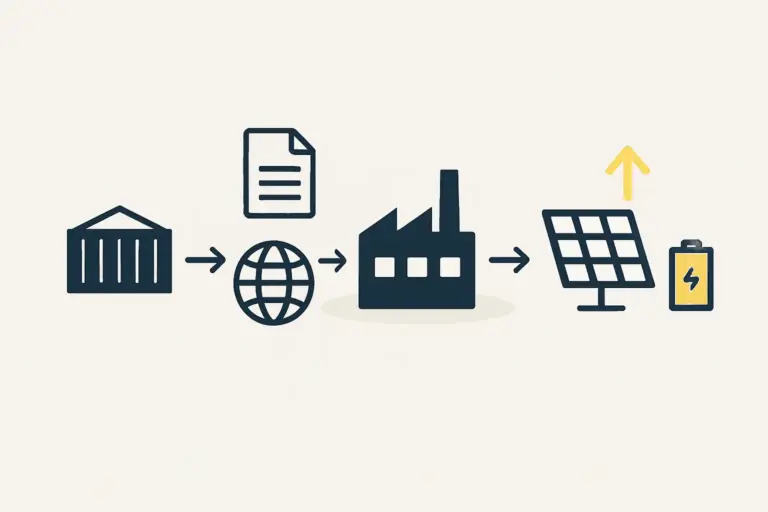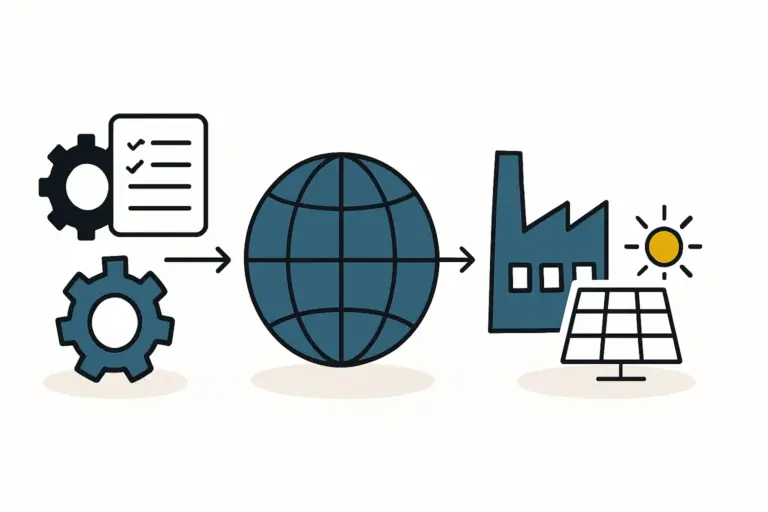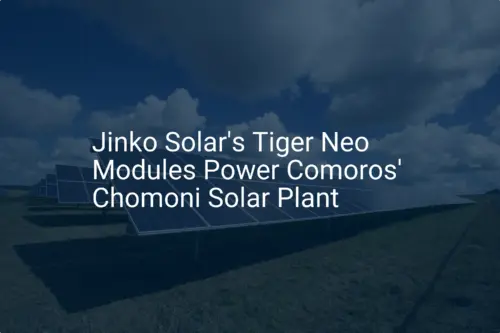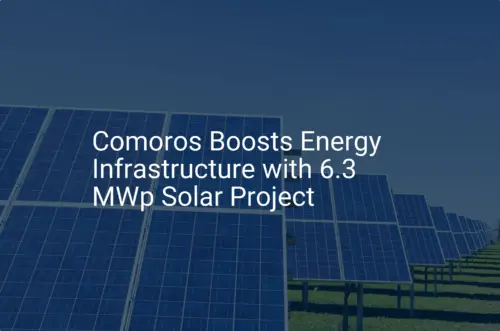Imagine a new solar module factory on Grande Comore, the largest island of the Comoros archipelago. The production line is running efficiently, and the first batch of high-quality solar panels is ready for shipment. For many of these modules, however, the final destination is not Moroni but the neighboring islands of Anjouan and Mohéli. This is where a critical, often underestimated, phase of the business begins: inter-island logistics.
For entrepreneurs in solar manufacturing, the journey of a solar module doesn’t end at the factory gate. Successfully navigating the maritime channels between islands is as crucial as the manufacturing process itself. This article explores the primary logistical challenges and strategic solutions for transporting solar components and finished products within Comoros.
Table of Contents
The Unique Logistical Landscape of the Comoros Archipelago
The Union of the Comoros is defined by its geography. Comprising three main islands—Grande Comore (Ngazidja), Anjouan (Nzwani), and Mohéli (Mwali)—the nation’s economy and infrastructure are fundamentally shaped by the sea connecting them. While international shipments arrive at the main port in Moroni, subsequent distribution to the national market relies entirely on a complex network of maritime transport.
Understanding this landscape is the first step. The distances between islands are not vast, but the infrastructure, vessel types, and operational predictability differ significantly from international shipping standards.
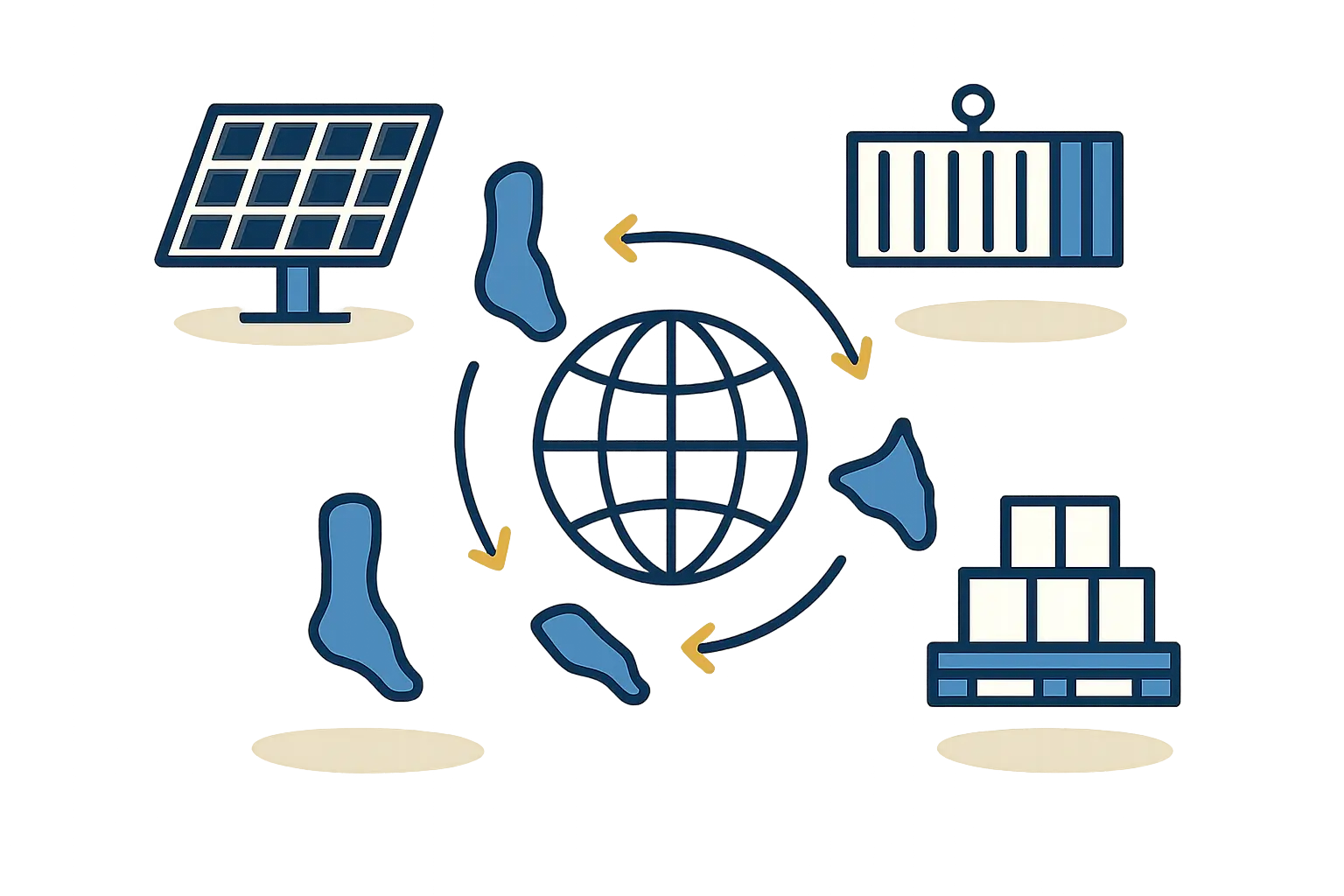
Key Challenges in Transporting Solar Components and Finished Modules
Transporting high-value, fragile goods like solar modules in this environment poses several distinct challenges. Anticipating these issues early in the business planning phase is essential for creating a resilient and profitable operation.
1. Port Infrastructure and Handling Capacity
The main port of Moroni on Grande Comore serves as the primary hub for international cargo. The ports on Anjouan (Mutsamudu) and Mohéli (Fomboni), however, are smaller and may lack equipment like cranes for heavy pallets or adequate storage space. This mismatch creates bottlenecks, forcing goods to be transferred from larger vessels to smaller ones that can access the destination port.
2. Vessel Availability and Unpredictable Scheduling
Inter-island transport often relies on smaller ferries, cargo boats, and traditional dhows. Unlike global shipping lines with fixed timetables, these local services can be infrequent and subject to change based on demand, weather, or vessel maintenance. This variability makes it difficult to promise reliable delivery times to customers on other islands and can disrupt a carefully planned supply chain for your solar factory. Based on experience from J.v.G. turnkey projects in similar regions, building a buffer of several days into any shipping estimate is a prudent measure.
3. High Risk of Damage During Transit
Solar modules contain delicate glass, solar cells, and aluminum frames that are susceptible to damage from impact, vibration, and torsion. The journey between islands on smaller vessels, which are more affected by rough seas, greatly increases the risk of micro-cracks or outright breakage. Improper handling during loading and unloading without specialized equipment is another major cause of damage.
4. Seasonal Weather Disruptions
The Comoros archipelago is subject to a cyclone season, typically from November to April. During this period, sea conditions can become dangerous, causing frequent and prolonged cancellations of maritime services. A factory’s entire distribution network can be halted for days or even weeks, impacting cash flow and project deadlines.
Strategic Solutions for Efficient Inter-Island Distribution
Though significant, these challenges can be managed with foresight and strategic planning. The goal is to build a logistics model that is both cost-effective and resilient.
Centralized Production vs. Decentralized Assembly
The entire logistics chain hinges on one fundamental strategic choice.
Centralized Model: The entire manufacturing process, from cell stringing to lamination and framing, occurs at a single factory on one island like Grande Comore. This model maximizes production efficiency and quality control but places the entire logistical burden on distributing fragile, bulky finished modules.
Decentralized Model: A main factory produces the core laminated components. These robust, semi-finished goods are then shipped to smaller assembly workshops on Anjouan and Mohéli for final framing and junction box attachment. This approach shifts the logistical challenge from transporting delicate glass panels to moving more durable materials, significantly reducing the risk of damage. This decision directly impacts the required solar factory layout and design.
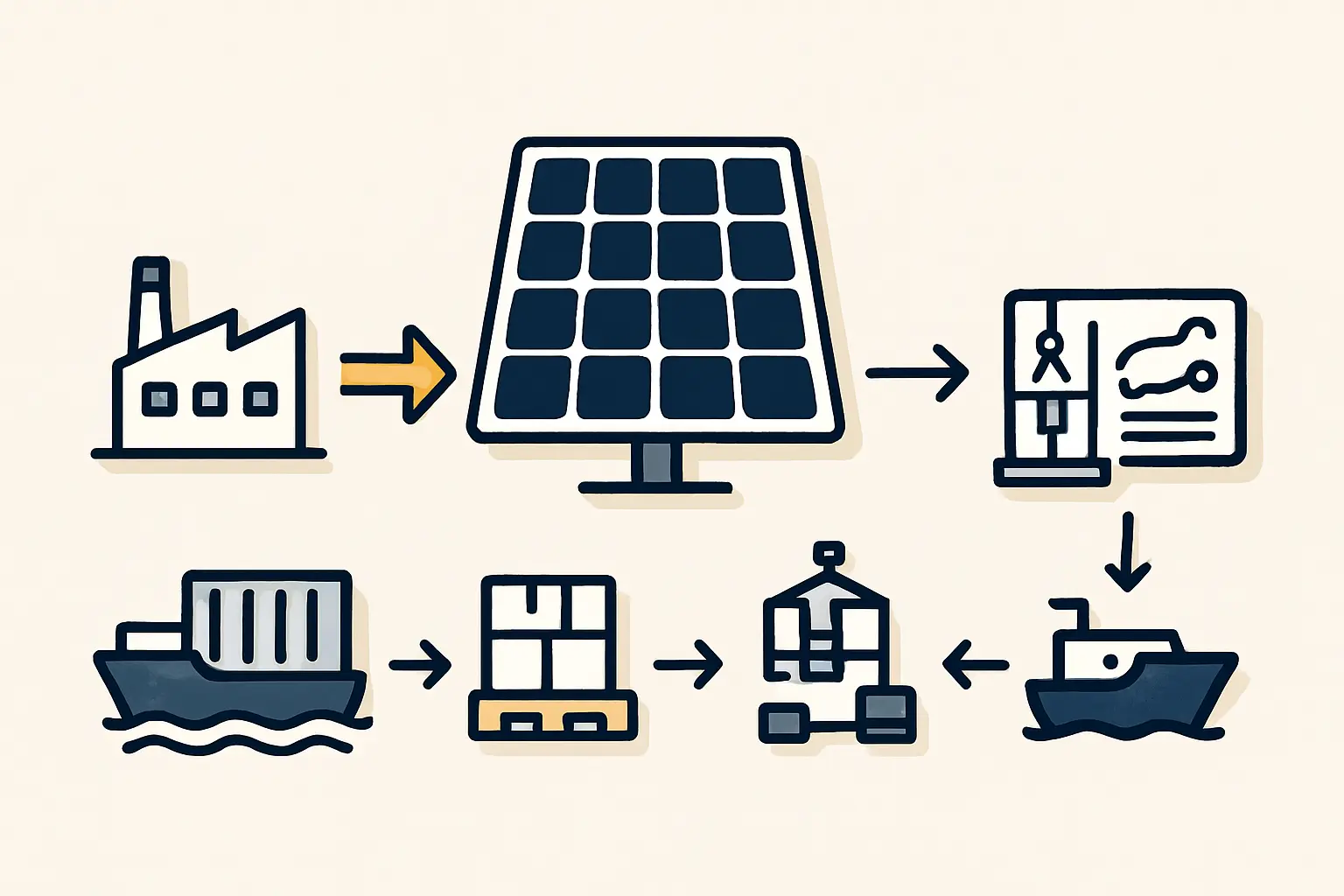
Building a Resilient Supply Chain
Regardless of the model chosen, certain practices are essential for success:
- Invest in Superior Packaging: Do not economize on packaging. Custom-designed crates with ample cushioning, vertical packing to prevent bending, and weatherproof wrapping are critical investments, not optional costs.
- Partner with Proven Local Agents: A reliable local shipping agent is indispensable. They have deep knowledge of vessel schedules, port-specific procedures, and customs requirements, and can navigate unforeseen issues far more effectively than an outside team.
- Establish Strategic Warehousing: Maintaining a small, secure warehouse or holding facility on each target island can buffer against shipping delays. This allows you to fulfill local orders immediately, even if the weekly ferry is cancelled, providing a significant competitive advantage.
A Business Plan Perspective: Accounting for Reality
When creating an initial business plan, it is easy to underestimate logistical complexities. A financial model might, for instance, assume a simple three-day transit time from the factory to a customer on Anjouan.
A more realistic scenario, however, might look like this:
- Day 1: Modules wait at Moroni port for the next available vessel.
- Day 2: The vessel’s departure is delayed due to weather.
- Day 3: Sea transit to Anjouan.
- Day 4: Unloading is slowed by congestion at Mutsamudu port.
- Day 5: Final delivery to the client.
This five-day timeline directly affects working capital, delivery commitments, and overall project costs. Factoring these potential delays into the initial investment planning for a solar factory is a hallmark of a well-prepared project.
Frequently Asked Questions (FAQ)
Q: What are the typical shipping cost structures for inter-island routes?
A: Costs are often calculated based on volume (cubic meters) or weight and can vary significantly between operators. It’s crucial to get detailed quotes that include all potential charges, such as port and handling fees.
Q: Is cargo insurance essential for inter-island transport?
A: Absolutely. Given the high risk of damage from rough seas and handling, comprehensive cargo insurance is non-negotiable. Ensure the policy specifically covers transit on smaller, non-containerized vessels.
Q: How do you identify reliable local logistics partners?
A: Contacting local business chambers, industry associations, or consulting firms with regional experience can provide referrals. It’s advisable to vet potential partners by requesting references from their existing clients.
Q: Can standard 20-foot or 40-foot containers be easily moved between all three islands?
A: This is a critical point to verify. While Moroni can handle standard containers, the ability of ports on Anjouan and Mohéli—and the vessels serving them—to handle and transport these large containers may be limited. It’s more likely that goods will need to be unloaded from a container in Moroni and reloaded as break-bulk cargo onto smaller ships.
Conclusion: Turning a Logistical Challenge into a Competitive Advantage
The complexities of inter-island logistics in Comoros should be seen not as a barrier, but as a fundamental business reality to be mastered. Entrepreneurs who invest the time to understand the local shipping environment, build strong local partnerships, and design a resilient distribution strategy will not only mitigate risks but also create a powerful competitive advantage.
A solar module’s value is realized only upon its successful installation. By meticulously planning its journey from the factory floor to the final rooftop, a solar manufacturing enterprise in Comoros can ensure its long-term success and contribute meaningfully to the nation’s energy future.

